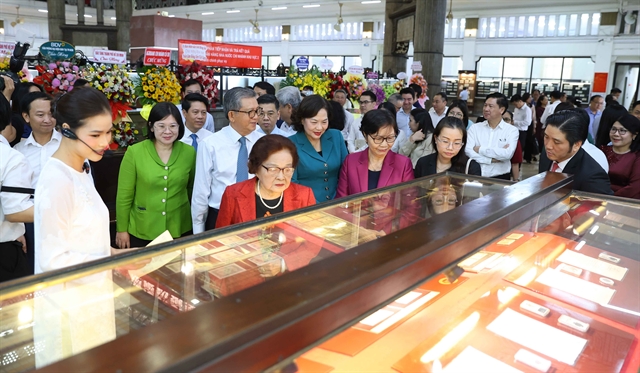 Society
Society


|
| The programme should continue prioritising investment in infrastructure facilities and roads while also promoting and preserving cultural values and identities of each locality. VNA/VNS Illustrative Photo Thu Hiền |
HÀ NỘI – Việt Nam is set to pour an estimated VNĐ12.35 quadrillion (US$468 billion) into new-style countryside development and poverty elimination from 2026 to 2035, underscoring its commitment to rural revitalisation and sustainable growth.
The ambitious funding package was discussed at a recent meeting between National Assembly Vice Chairman Lê Minh Hoan and representatives from the Ministry of Agriculture and Environment.
Of the total, about VNĐ4.93 quadrillion is earmarked for 2026–2030, with the remaining VNĐ7.42 quadrillion allocated for 2031–2035.
Funding will be sourced from the central and local budgets, capital from national and local programmes, credit, business support and contributions from citizens, according to the investment policy proposed for the national target programme on new-style rural development and sustainable poverty reduction.
The NA Vice Chairman emphasised that the programme must adopt a flexible and effective implementation mechanism to reach every citizen.
He called for stronger coordination among ministries, sectors and, in particular, local authorities.
He stressed that investment should continue to prioritise infrastructure and roads while promoting and preserving the cultural values and identities of each locality, especially ethnic minority communities.
To ensure effective implementation, Hoan said, training and capacity-building for local officials, particularly at commune level, must also be strengthened.
In addition to recognising communes that meet all new-style countryside criteria, Hoan suggested considering rewards for those excelling in specific areas such as agro-tourism, cooperative economy development or digital transformation, which will provide encouragement and motivation for communes.
Head of the Central Coordination Office for New-Style Rural Area Development Ngô Trường Sơn stated that merging the two national target programmes on new-style rural area development and sustainable poverty reduction into one demonstrates strong political will to streamline the apparatus, enhance state governance efficiency, integrate multi-sectoral goals, strengthen interregional and inter-level coordination and promote the central role of the people.
According to Sơn, the new programme provides a framework for fruitfully carrying out the Politburo's important resolutions, including those on making breakthroughs in science and technology development, innovation and digital transformation, international integration, law building and enforcement and private sector development. It incorporates critical elements such as improving grassroots institutional quality, supporting rural start-ups and enhancing region–market–value chain connections.
It will be carried out nationwide, spanning all 34 provinces and cities with 2,621 communes, 687 wards, 13 special zones and every village.
Beneficiaries include poor and near-poor households, those newly escaping from poverty and relevant individuals, communities, cooperatives, enterprises and other organisations nationwide, with priority given to rural areas and disadvantaged communes.
The programme focuses on developing the rural economy towards higher value and sustainability by supporting the development of One Commune One Product (OCOP) products and distinctive forms of agro-tourism, eco-tourism and community-based tourism linked with local and regional strengths. It will continue to promote the central role of people and businesses in new-style rural area building and sustainable poverty reduction.
Crucially, attention will be paid to strengthening inspection, supervision and evaluation across all levels and sectors, while empowering communes and communities through transparent oversight mechanisms.
A review of new-style countryside development after July 1, 2025, for the 2026–2030 period, shows that 1,719 of 2,621 communes (65.6 per cent) are likely to meet the 2021–2025 new rural standards, with 362 communes (21 per cent) expected to qualify as advanced new-style rural areas and 59 communes (3.4 per cent) as model ones.
Regarding sustainable poverty reduction, if the 2026–2030 national multidimensional poverty standards are applied, the country’s multidimensional poverty rate is projected at 11.7 per cent, with around 350 communes having this rate above 50 per cent. — VNA/VNS


.jpg)

